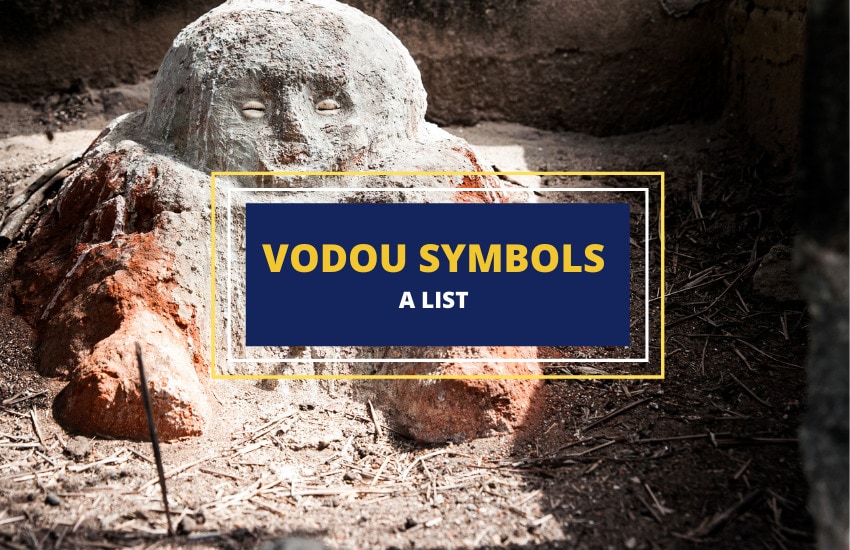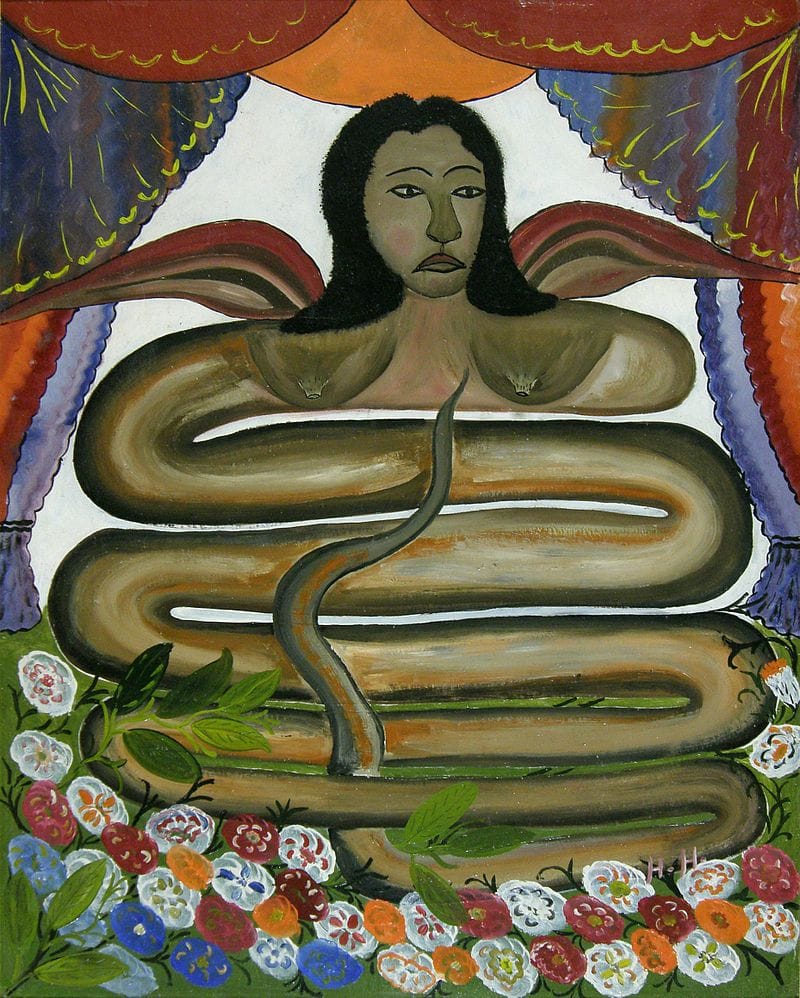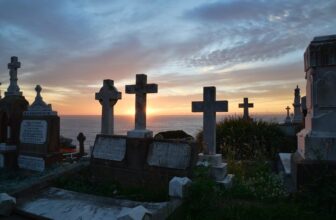
Table of Contents
As a result of the African slave trade, the blending of African and European cultures has been a phenomenon that has occurred in multiple regions throughout the world. An example of this is the Vodou religion, also spelled Voodoo or Vodun, which combined aspects of West African religion, Roman Catholicism, and indigenous religions of other ethnic groups. Today, it’s practiced throughout Haiti and the Caribbean, and certain other regions with African heritage.
While the followers of Vodou religion recognize the existence of one creator god, they also believe in a complex pantheon of spirits called Lwa or Loa. These spirits are called by many names and have their own emblems. During ceremonies, they’re represented by symbols called vèvè, which are drawn on the floor by a priest or priestess. Then, participants offer prayers in return for health, protection, and favor.
Legends attached to individual Loa differ from village to village, and vèvè designs may vary according to local customs. It’s thought that these spirits have an interest in humanity, and each of them plays a different role in the lives of their believers.
In this article, we outline different Vodou symbols, the Loa they’re associated with, and their importance.
Papa Legba

The most honored spirits in the Haitian pantheon, Papa Legba is regarded as the Guardian of the Crossroads and the Old Man. He’s believed to be the messenger between humans and the Loa, so any ritual begins by honoring him. His symbol is the cross, which also represents the intersection of spiritual and material worlds. He’s also thought to be a guardian spirit who protects temples and houses.
Papa Legba is commonly portrayed as an elderly man carrying a sack called sac paille. Sometimes, the image of St. Lazarus walking down a road with a cane is used to represent him. Also, St. Peter, who holds the keys to the gate of heaven, is associated with him. In Haiti, numerous chants and songs are used to ask him to open the gates and allow the people to come in contact with other spirits.
Danbala-Wedo

Also known as Damballah, Danbala-Wedo is a benevolent father figure and one of the most powerful of the Loa. It’s believed that even other Loa show him great reverence. He’s thought to be responsible for blessings of health, goodwill, and prosperity. His Vodou symbol is the serpent, particularly a bright green or pure white python, representing his slow-moving but generous and loving nature.
Danbala-Wedo is associated with St. Patrick, who drove the snakes out of Ireland, though several descriptions of him in mythologies don’t bear resemblance to the saint. It’s thought that his presence brings peace and harmony, and many seek out his help for marriage. His worship is synonymous with the worship of nature.
Baron Samedi

Also known as the Lord of the Cemetery, Baron Samedi is the Loa of the dead and controls access to the underworld. He’s commonly portrayed dressed in black, often associated with skulls, bones, and other death symbols. His Vodou symbol is quite elaborate, including cemetery crosses and coffins, as he’s believed to sit on a throne decorated with a cross.
Baron Samedi is also associated with the concepts of life and fertility, and sexual regeneration. Even though he’s thought to determine when someone’s life will end, it’s also believed that he wants children to live their full life before they arrive in the underworld. For these reasons, he’s petitioned for help with conception, as well as to ensure the lives of children.
Agwe
Also known as the Tadpole of the Pond and Shell of the Sea, Agwe is a water spirit, and is thought to be the owner of the sea and its bounty. He’s the patron of sailors and fisherman, and the traditional protector of Haiti, an island nation where people have depended upon the sea for survival.
He’s commonly portrayed as a mulatto with green eyes and fair skin, wearing a naval uniform. His Vodou symbol is a boat or ship, and his rituals are usually performed near the seas, lakes, or rivers. He has similar traits to St. Ulrich, who’s often portrayed holding a fish.
Gran Bwa
The spirit of all the leaves, trees and wild forest, Gran Bwa is represented by a vèvè of a blocky human figure with a heart shaped face. His name means big tree or great wood, and the mapou or silk cotton tree is sacred to him. He’s thought to be the protector and guardian of the ancestors, and is associated with healing, secrets, and magic. Gran Bwa, also known as Gran Bois, is described as big-hearted, loving, and approachable. This Loa is often called during initiation rites, and St. Sebastian, who was tied to a tree before being shot with arrows, is linked with him.
Ezili Freda
The Loa of femininity and love, Ezili Freda is represented as a beautiful light-skinned woman. She’s associated with womanhood in the sense of desire and sexuality, but is also served by men seeking sexual prowess or riches. She’s described as generous, but can also be fickle and cruel. The central element of her vèvè is a heart, which speaks to her role as a Loa.
Ayizan

The Loa of commerce and the marketplace, Ayizan is thought to have the ability to purify her surroundings and eliminate malevolent spirits. She’s regarded as the first mambo or priestess, associating her with knowledge and mysteries of the natural world, and those of initiation. Her favorite tree is the palm tree, and her symbol is the palm frond used in initiation ceremonies. Usually, she isn’t given a saint image, though some associate her with St. Claire of Messina.
Papa Loko
Papa Loko is the Loa of healers and guardian of sanctuaries, usually invoked by herb doctors before a treatment. He’s believed to give healing properties to leaves and has extensive knowledge of pharmaceutical uses of herbs. He’s commonly depicted in the form of a butterfly, and has borrowed traits from St. Joseph, the Christ’s earthly father and the Virgin Mary’s husband.
Wrapping Up
Although once banned in Haiti, Vodou is practiced by over 60 million people today. Vodou brought native African religions together with European and Amerindian spirituality. Many people who follow the religion today make use of vèvès or Vodou symbols to invoke the spirits or Loa.








